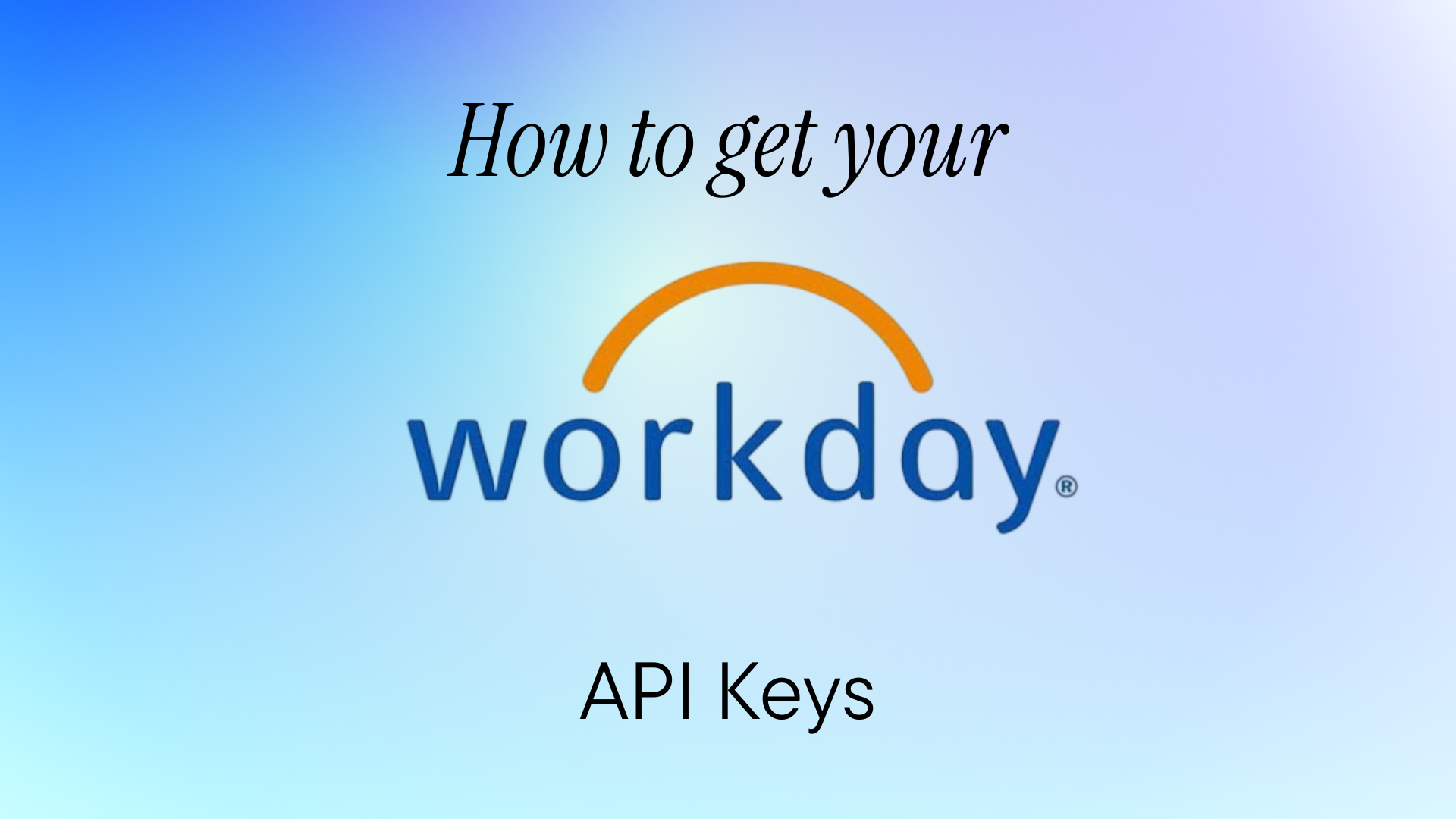The Today’s API Integration Problem
Today's businesses operate through an ecosystem of specialized SaaS tools. CRM systems, accounting software, HR platforms, payment processors, and more all require their own integration, authentication method, data format, and maintenance schedule. For a typical mid-sized SaaS company connecting to 15-20 third-party services, this translates into thousands of hours of engineering work annually just to keep integrations running.
Traditional point-to-point integrations create cascading problems: version updates break existing connections, each new platform requires weeks of development, and your engineering team spends more time maintaining integrations than building core features. The hidden costs compound through duplicate error handling, inconsistent data formats, and the constant firefighting when a critical integration fails at 2 AM.
Unified APIs address this fragmentation by providing a single, standardized interface to connect with multiple platforms in the same category. Instead of building custom integrations for Salesforce, HubSpot, and Pipedrive separately, you integrate once with a unified CRM API. This isn't just about convenience. It's about fundamentally changing how engineering teams approach integration architecture.
What Is a Unified API and How It Works
A Unified API acts as an abstraction layer between your application and multiple third-party services. It normalizes different data structures, field names, and authentication methods into a consistent schema. When you request customer data, the Unified API translates that into the specific format each connected platform expects, then returns standardized responses regardless of the source.
The normalization process handles the complexity behind the scenes. Where Salesforce might call it "Account.Name" and HubSpot uses "company.properties.name," your application only needs to know about "company.name." This extends to authentication. Instead of implementing OAuth flows for each provider, you authenticate once with the Unified API.
For developers, this means writing integration code once. A single set of endpoints connects to any supported platform. Your error handling, retry logic, and data validation remain consistent across all integrations. When a new CRM enters your market and customers demand support, adding it becomes a configuration change, not a three-sprint engineering project.
Simplified Integration & Development Efficiency
Unified APIs can reduce integration development time by up to 80% per platform. This isn't marketing hyperbole. It's the mathematical reality of eliminating redundant work. Consider what disappears from your development cycle:
• No studying each platform's unique API documentation
• No implementing different authentication mechanisms per provider
• No writing custom data transformation logic for every field mapping
• No building separate error handling for each API's quirks
• No maintaining different rate-limiting strategies
A typical Salesforce integration might take 3-4 weeks to build properly, including authentication, data mapping, error handling, and testing. With a Unified API, that same integration takes 2-3 days. Multiply this across 10-15 integrations, and you've recovered months of engineering capacity.
The productivity gains extend beyond initial development. Updates and modifications that would typically require touching multiple codebases now happen in one place. When product requirements change, such as adding a new field to your customer sync, you update it once rather than in every integration.
Scalability and Plug-and-Play Expansion
Unified APIs transform scaling from a linear problem to a constant-time operation. Adding support for a new platform no longer means allocating engineering resources for weeks. It's often as simple as enabling the connector in your Unified API provider's dashboard and updating your configuration.
This flexibility becomes critical when entering new markets. European customers might demand Exact or Sage integration, while US customers need QuickBooks. Previously, each expansion required careful resource planning and delayed market entry. Now, you can promise and deliver new integrations in days.
For CTOs, this represents predictable scaling without proportional team growth. You don't need specialists for each platform or dedicate engineers to integration maintenance. A small team can manage dozens of integrations that would traditionally require a dedicated department. The risk profile changes too. New integrations don't threaten existing stability, and rollbacks are straightforward.
Real-world example: A SaaS platform expanding from North America to Europe can add support for regional accounting systems like Datev or Reviso without delaying their launch or hiring specialized developers familiar with these platforms.
Improved Developer Experience & Real-Time Data Synchronization
The data synchronization capabilities of Unified APIs vary significantly between providers. While modern platforms increasingly offer real-time updates through webhooks and event streams, not all Unified APIs support this. Some still rely on periodic polling or batch synchronization, which can introduce delays ranging from minutes to hours depending on the configuration and pricing tier.
When evaluating Unified API providers, understanding their synchronization architecture is critical:
- Real-time providers deliver updates immediately through webhooks, ensuring your application knows about changes as they happen
- Near real-time solutions may batch updates in short intervals (1-5 minutes)
- Polling-based systems require you to query for changes, potentially missing updates between checks
- Hybrid approaches offer real-time for some platforms but fall back to polling for others
The developer experience improvements remain substantial regardless of sync method:
• Consistent SDKs across all platforms
• Unified error responses that actually make sense
• Sandbox environments that work identically to production
• Comprehensive logging that spans all connected systems
• Standardized pagination and filtering across all data sources
Testing becomes dramatically simpler. Instead of maintaining test accounts across multiple platforms, developers work with consistent mock data. Debugging moves from hunting through platform-specific logs to viewing consolidated traces. The cognitive load reduction is significant. Developers learn one API instead of dozens.
This consistency extends to documentation. Rather than juggling multiple documentation sites with varying quality and completeness, your team references a single, well-maintained resource. New team members onboard faster, and domain knowledge becomes less critical.
Centralized Management and Maintenance
Unified APIs consolidate operational complexity into a manageable control plane. Instead of monitoring 15 different integration health checks, you have one dashboard. When Salesforce changes their API, your Unified API provider handles the adaptation. Your code remains untouched.
Key operational benefits include:
• Single point for monitoring integration health and performance
• Consolidated error logs with consistent formatting
• Unified approach to version management and deprecation handling
• Centralized rate limit management across all platforms
• One place to manage API keys and authentication tokens
This centralization reduces the operational burden on engineering teams. Middle-of-the-night pages become rare because the Unified API provider handles transient failures and automatic retries. When issues do arise, diagnosis is faster because all relevant information is in one place.
The long-term maintenance savings are substantial. API providers regularly change their interfaces. Fields get renamed, endpoints deprecated, authentication methods updated. With direct integrations, each change requires code updates, testing, and deployment. With Unified APIs, these changes are absorbed by the provider, often without any action required from your team.
Enhanced Security and Compliance
Unified APIs embed enterprise-grade security and compliance frameworks including SOC 2, GDPR, or ISO 27001 that would be expensive to implement individually. They provide a single enforcement point for security policies rather than scattered implementations across multiple integrations.
Security benefits include:
• Centralized token management with automatic rotation
• Consistent OAuth implementation with proper token refresh handling
• Audit logs that span all integrated systems
• Built-in encryption for data in transit and at rest
• API gateway protections including rate limiting and DDoS prevention
For companies in regulated industries, this consolidated security model simplifies compliance audits. Instead of demonstrating secure practices across dozens of integration points, you audit one. The attack surface shrinks significantly with fewer endpoints exposed, fewer credentials to manage, and fewer potential vulnerabilities.
The Unified API provider handles security updates and vulnerability patches across all connected platforms. When a zero-day appears in a popular CRM's API, your exposure is limited and the fix is deployed centrally.
Cost and Resource Efficiency
The economic impact of Unified APIs extends beyond reduced development time. Consider the full cost structure of maintaining direct integrations:
• Engineering salaries for initial development
• Ongoing maintenance and bug fixes
• Infrastructure for handling different APIs' requirements
• Data storage for caching and synchronization
• Monitoring and alerting systems
• Documentation and knowledge transfer
Unified APIs eliminate much of this overhead. You're not maintaining custom middleware, building platform-specific caching layers, or running separate sync jobs for each integration. The reduction in infrastructure complexity alone can save thousands monthly for companies at scale.
The business impact is equally significant. Faster integration deployment means shorter sales cycles. You can say "yes" to enterprise customers with specific platform requirements. Lower maintenance burden means more engineering capacity for revenue-generating features. Reduced integration failures mean better customer retention and lower support costs.
Support for Innovation and Collaboration
By removing repetitive integration work, Unified APIs free engineering teams to focus on differentiation. Instead of building the fifteenth variation of Salesforce sync, developers can work on machine learning features, process automation, or user experience improvements.
The standardized data model enables better cross-team collaboration:
• Product teams can confidently design features knowing data will be consistent
• Data teams get clean, normalized datasets for analytics
• Customer success can troubleshoot issues without platform-specific expertise
• Sales can promise integrations knowing delivery is predictable
This acceleration of core development shortens go-to-market cycles. Features that depend on external data, like unified customer views or automated workflows, move from quarters to weeks. The ability to experiment increases because the cost of trying new integrations is minimal.
Breaking Down Data Silos: The Link to Unified Data Platforms
Unified APIs serve as the foundation for breaking down organizational data silos. By normalizing data at the point of ingestion, they ensure consistency across all downstream systems. This connects naturally to the broader unified data platform strategy many companies are pursuing.
The benefits compound when combined with modern data infrastructure:
• Consistent data models enable reliable analytics and reporting
• Standardized schemas simplify data warehouse design
• Real-time synchronization supports operational analytics
• Unified governance policies can be applied at the API level
This consistency is particularly valuable for AI and machine learning initiatives. Training models on data from multiple sources becomes feasible when the data follows predictable patterns. The quality improvements from normalization, including standardized date formats, consistent currency handling, and unified customer identifiers, directly impact model accuracy.
Unified APIs: Pros and Cons
Pros:
• Development time reduced by up to 80% per integration
• Standardized data models across all platforms
• Centralized monitoring and maintenance
• Real-time data synchronization via webhooks
• Built-in security and compliance frameworks
• Predictable scaling without proportional team growth
• Improved developer experience and faster onboarding
Cons:
• Dependency on third-party provider uptime
• Potential limitations for highly specialized use cases
• Not all API endpoints may be exposed
• Additional abstraction layer can complicate debugging
• Vendor lock-in considerations
• Usage-based pricing can become expensive at scale
• May not support proprietary or internal systems
Unified APIs aren't universal solutions. Highly customized integrations or platforms with unique business logic might require direct API access. Some specialized endpoints or beta features might not be available through the unified layer. For most standard integration needs, however, the benefits significantly outweigh the limitations.
The Future of Unified APIs in 2026 and Beyond
The Unified API space is evolving rapidly. Emerging capabilities include intelligent data mapping that automatically handles schema changes, self-healing integrations that adapt to API modifications, and predictive error handling that prevents failures before they occur.
Adoption is accelerating across industries. Financial services use Unified APIs for open banking compliance. HR departments integrate across recruiting, payroll, and benefits platforms. E-commerce platforms connect inventory, shipping, and customer service systems. The pattern is clear: Unified APIs are becoming the default architecture for integration-heavy applications.
Unified APIs are proving useful for AI Agents, enabling easy Agentic Retrieval from various applications and data sources, compared to developing and managing multiple endpoints for different apps independently. The AI agent only needs to remember a single unified API that can easily fetch data from various sources simultaneously, increasing the efficiency and accuracy of AI Agents in production.
We're moving toward an ecosystem where direct API integration becomes the exception, reserved for truly unique requirements. The infrastructure layer is maturing to handle more complex scenarios, including multi-region data residency, industry-specific compliance, and hybrid cloud deployments.
Conclusion
Unified APIs represent a fundamental shift in how we approach system integration. They transform what was once a major engineering burden into a solved problem, freeing teams to focus on building differentiated features. The benefits of faster development, better scalability, lower costs, and improved reliability make them essential infrastructure for modern SaaS companies.
For CTOs and technical decision-makers, the question isn't whether to adopt Unified APIs, but how quickly you can migrate from legacy point-to-point integrations. The engineering hours recovered, the acceleration in product development, and the reduction in operational complexity provide competitive advantages that compound over time.
Evaluate Unified APIs not as another integration option, but as core architectural strategy. The companies that recognize this shift early will build faster, scale more efficiently, and deliver better products while their competitors remain mired in integration maintenance.
Ready to get started?
Scale your integration strategy and deliver the integrations your customers need in record time.








